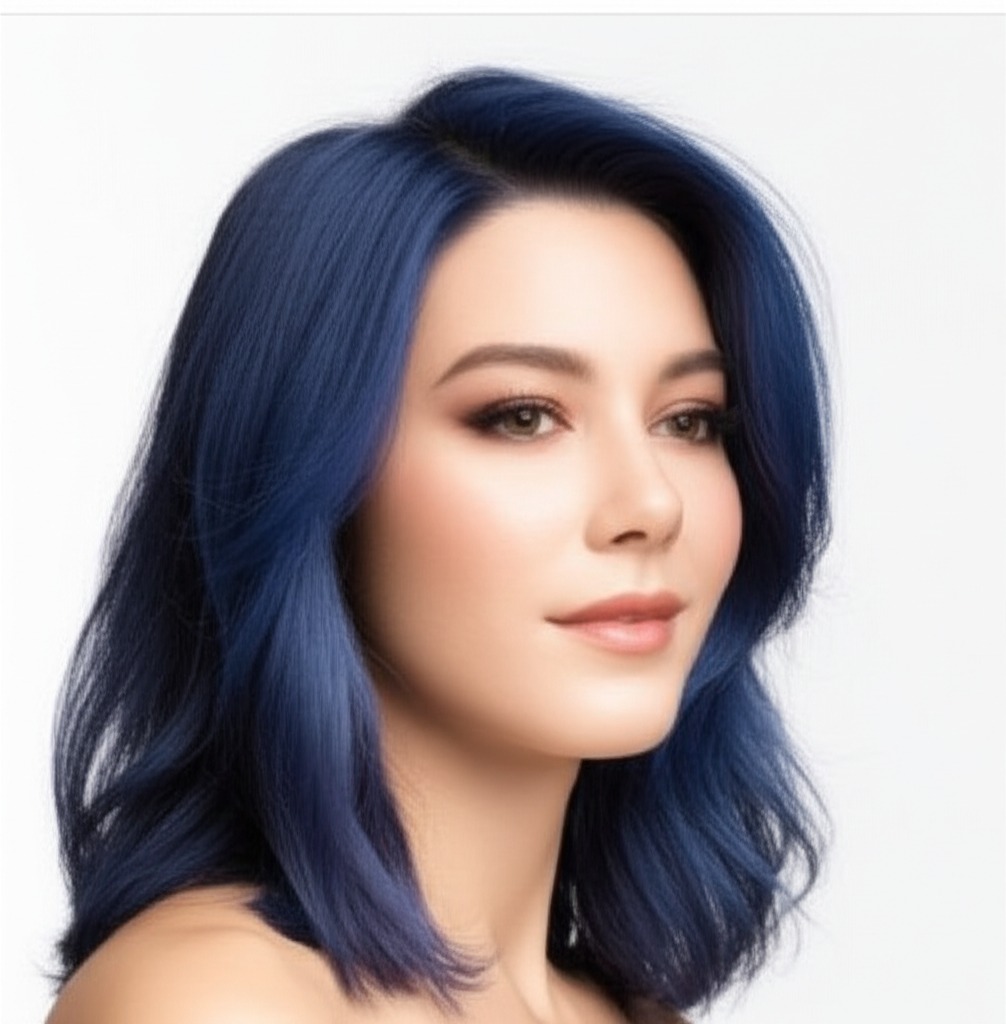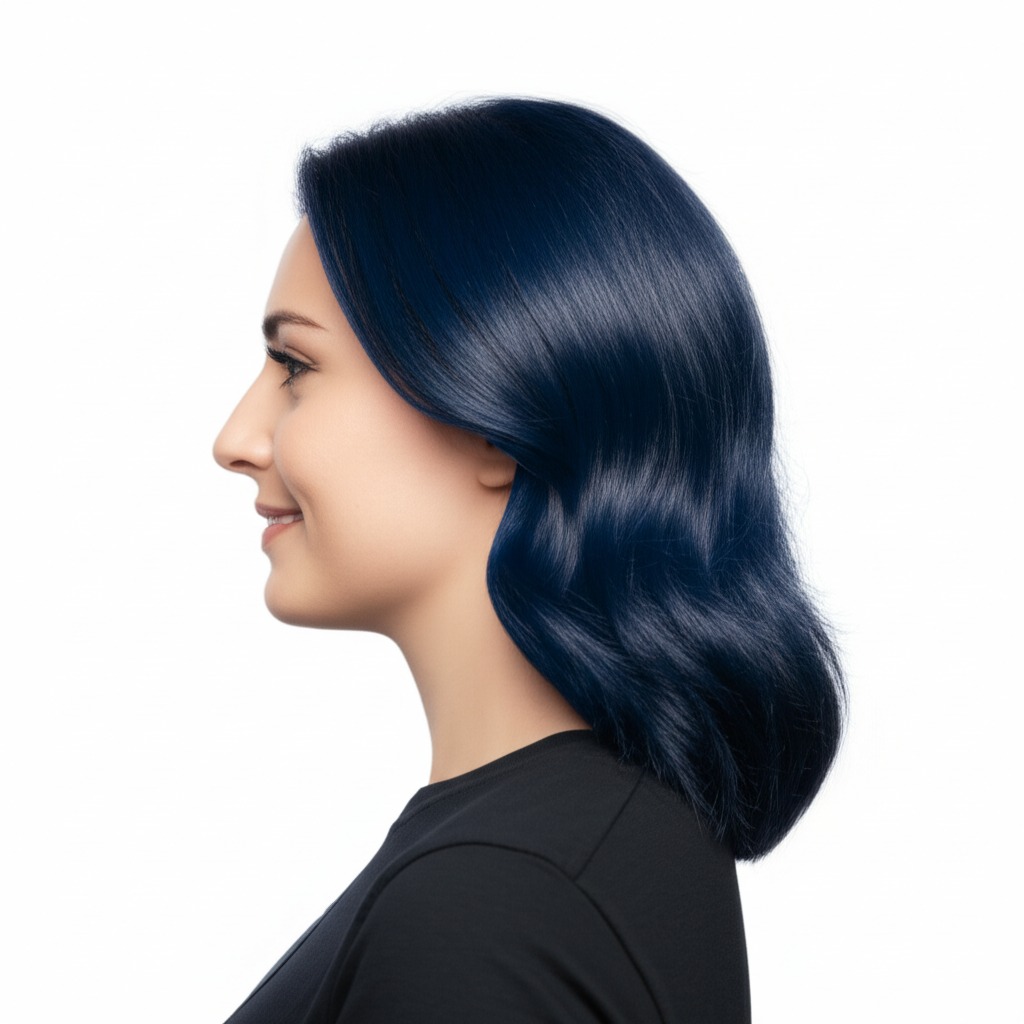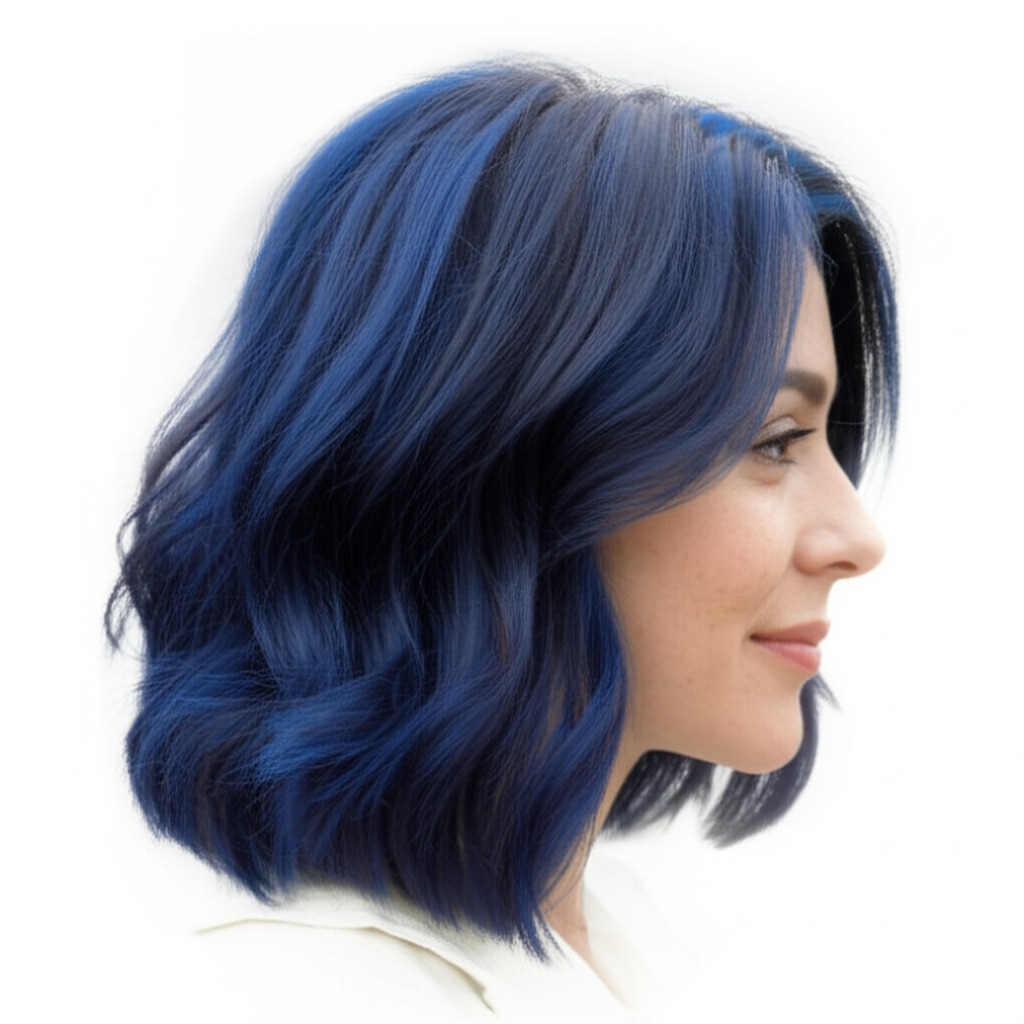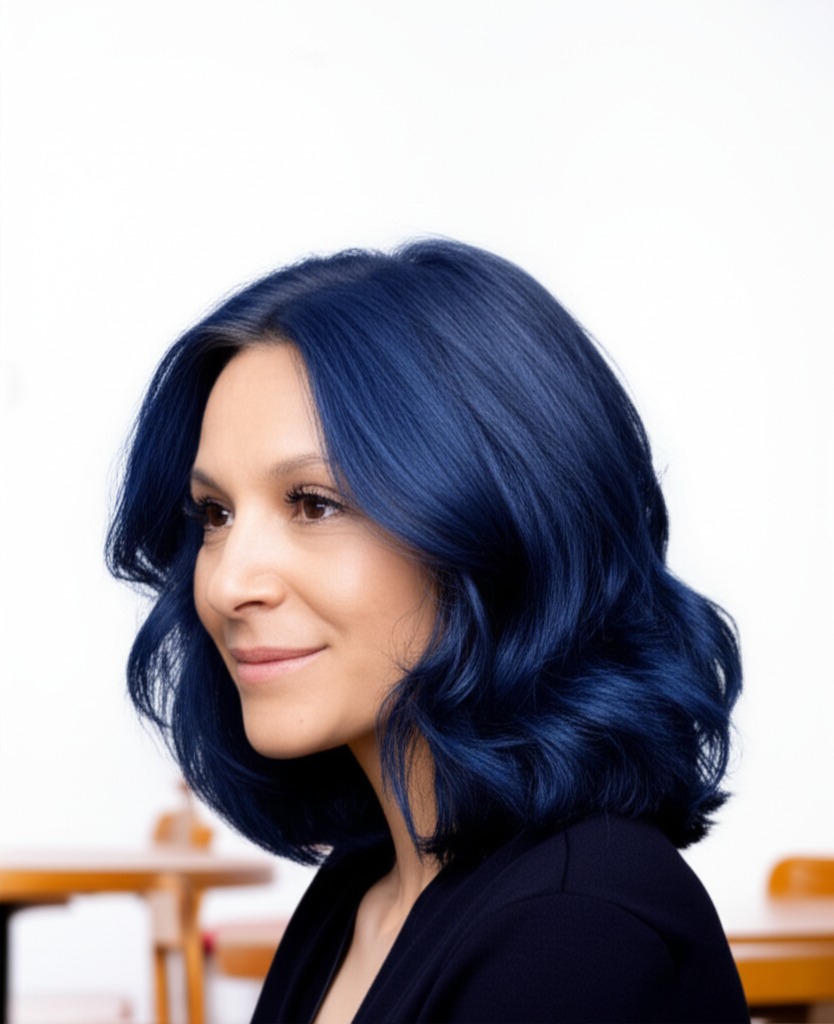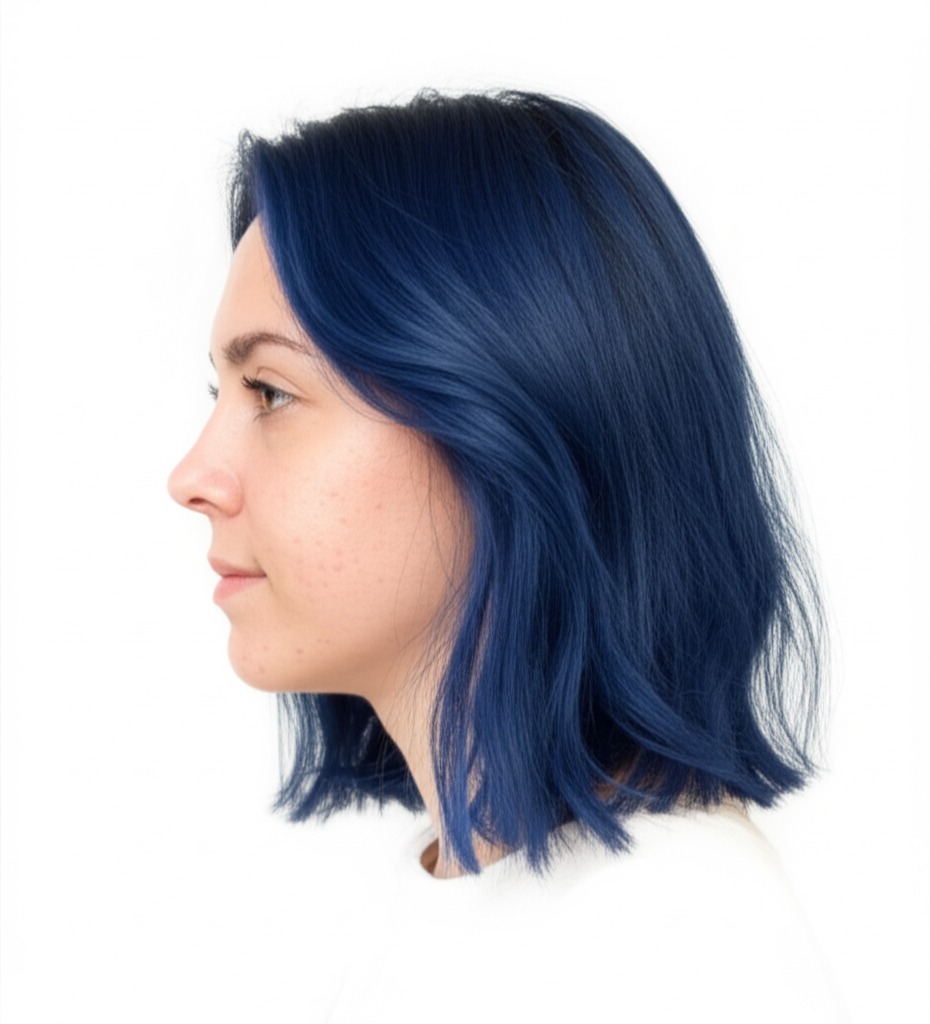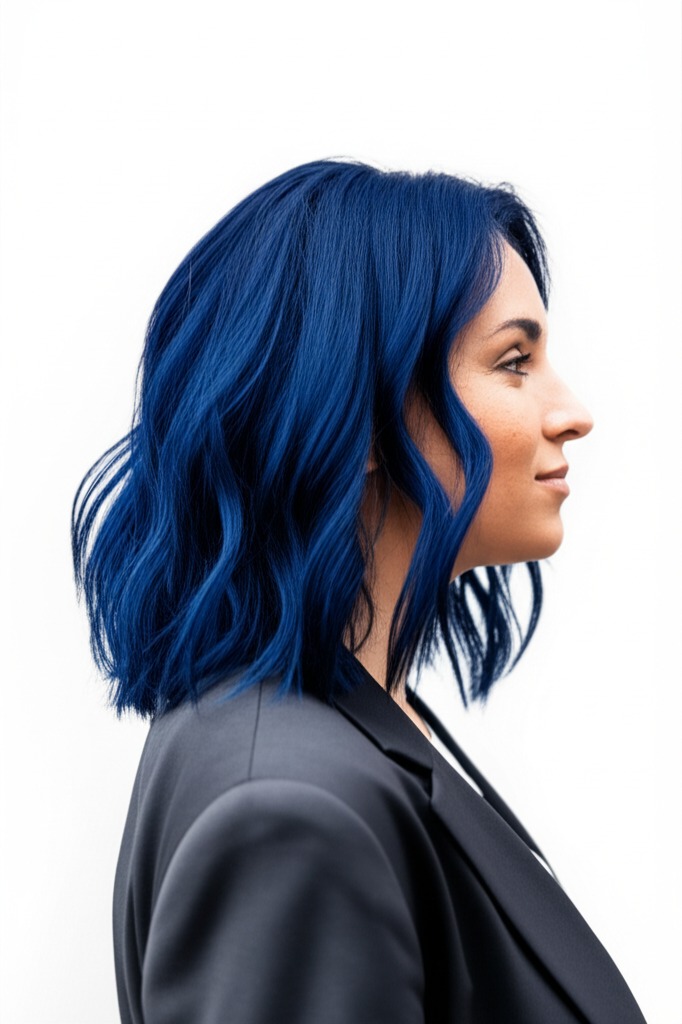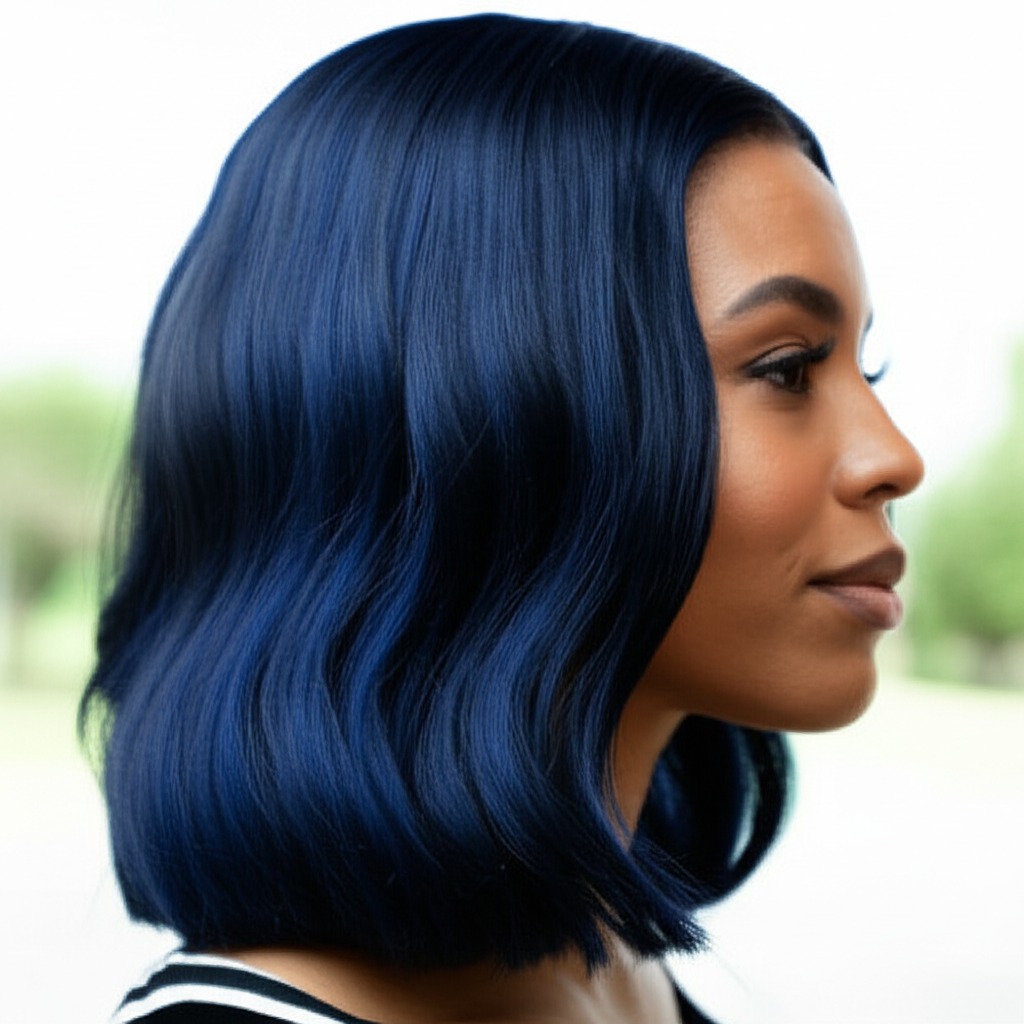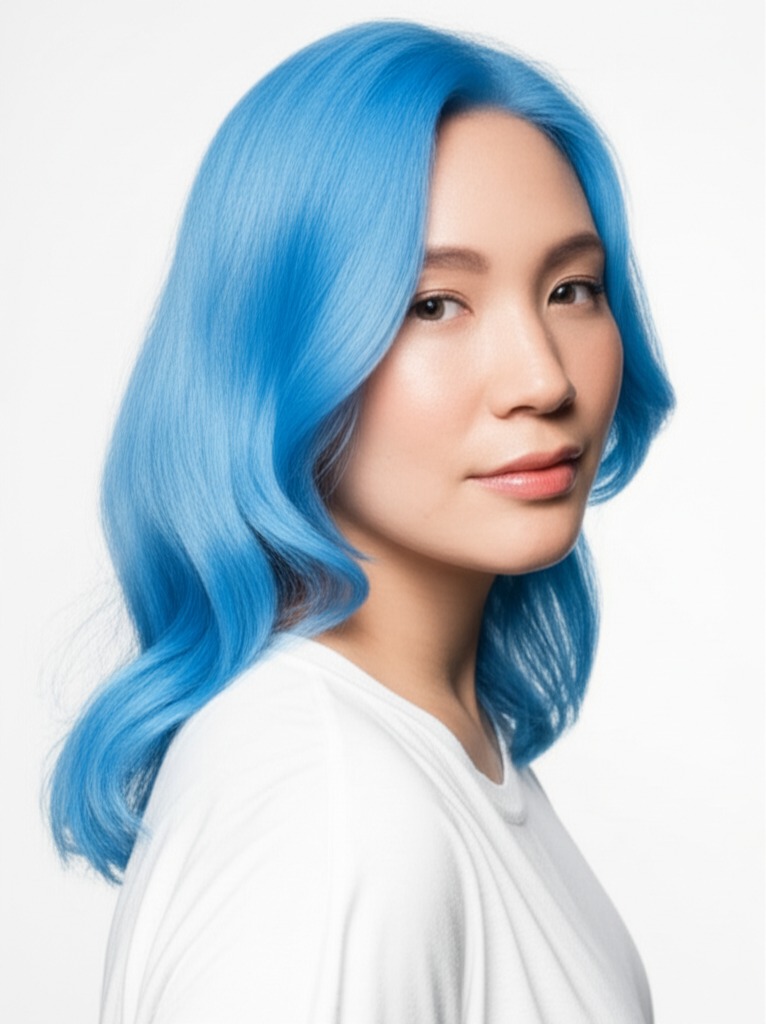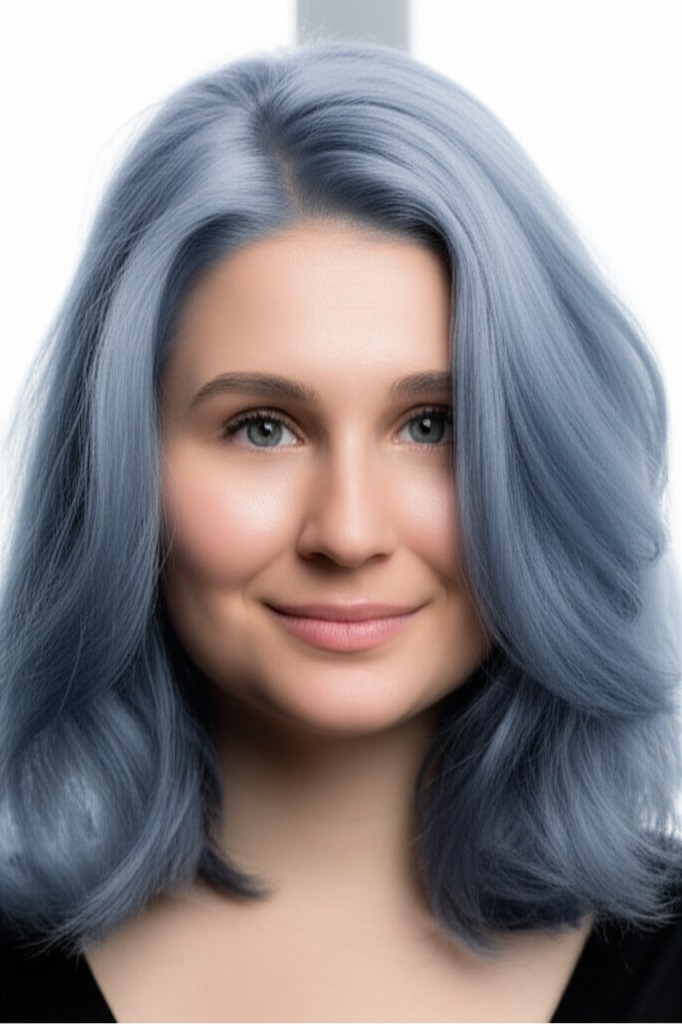#Dive into Deep Blue: A Guide to Navy Hair Color
Navy blue hair – it’s bold, striking, and undeniably cool! But achieving that perfect shade of oceanic depth requires more than just picking a box dye. This guide will break down everything you need to know about rocking navy hair, from understanding the color itself to keeping it looking its best. Whether you're dreaming of a dramatic transformation or subtle statement, let’s navigate this vibrant hue together.
#1. Understanding Navy Blue: Shade Definition
Navy isn't just "blue." It's nuanced! Here’s what to consider:
- Undertone: True navy leans cool. Think deep ocean water – it has that blue-grey coolness. While you can tweak it slightly, straying too far into warm tones (like a teal or turquoise) will shift the color away from true navy.
- Depth/Levels: Levels refer to how dark the hair is on a scale of 1-10 (1 being darkest black, 10 being lightest blonde). Navy typically sits between levels 2-5 depending on your starting point and desired intensity. A level 2 or 3 will be very deep and saturated; a level 4 or 5 allows for more dimension and lighter pieces if you’re incorporating highlights or balayage.
- Variations: You might hear terms like "midnight blue" or "ink blue." These often refer to slightly different shades within the navy family, generally meaning even deeper and more saturated tones.
#2. Who Does Navy Blue Flatter?
While confidence is key for any bold color, certain features harmonize particularly well with navy:
- Skin Tone & Undertone:
- Cool Skin Tones (pink or blue undertones): Navy looks amazing. It complements the coolness in your skin and creates a striking contrast. Think fair porcelain skin, rosy cheeks, or cool-toned olive complexions.
- Neutral Skin Tones: Can often pull off navy, but it's important to consider eye color (see below) and potentially lighten the base slightly for better vibrancy.
- Warm Skin Tones (yellow or golden undertones): Navy can work, but proceed with caution! The contrast might be too stark. You’ll likely need a lighter base/highlights to soften the look and prevent it from washing you out. A stylist can help determine if this is right for you.
- Eye Colors: Blue, grey, green, and even brown eyes often pop beautifully against navy hair. The contrast creates a captivating effect.
- Natural Hair Level Starting Point:
- Levels 1-3 (Dark Brown/Black): Navy can be achieved with minimal lifting (bleaching). This reduces damage significantly!
- Levels 4-6 (Medium Brown): Some lifting will be necessary, but still manageable. Expect a few sessions to achieve the desired depth.
- Levels 7+ (Light Brown/Dark Blonde): Achieving true navy from this level requires more significant bleaching and is generally not recommended without careful consultation with a professional.
#3. Technique Options: Finding Your Navy Style
How you apply the color significantly impacts the final result:
- Single-Process: A solid, all-over application. Best for those wanting a bold, uniform navy look on darker hair (levels 1-4).
- Highlights/Lowlights: Adding lighter or darker pieces to create dimension and visual interest. Lowlights can soften the intensity of the navy; highlights add brightness.
- Babylights: Very fine, subtle highlights that mimic natural sun-kissed strands. Can be used to break up a solid navy color for more movement.
- Gloss/Toner: Used after bleaching or coloring to refine the tone and add shine. A blue gloss will intensify the navy; a violet gloss can counteract any unwanted brassiness.
- Balayage-Effect: Hand-painted highlights that create a softer, blended look. This is great for adding dimension and making the color appear more natural (even though it’s bold!). A solid balayage base with painted navy ends is a popular choice.
#4. Maintenance & Longevity: Keeping Your Color Vibrant
Navy hair isn't "set it and forget it." Here's what to expect:
- Wash Frequency: Aim for 2-3 washes per week using color-safe shampoo (more on that below).
- Toner Refresh: Cool tones fade quickly! Expect a toner refresh every 4-8 weeks, depending on your hair’s porosity and how often you wash it.
- Root Growth Pacing: As your natural roots grow in, the contrast will be more noticeable. Discuss with your stylist how to manage this – blending highlights or lowlights can help extend the time between full color applications.
- Budget/Time Planning: This is a significant commitment! Expect initial coloring to take 2-4 hours (or even longer for multiple sessions). Ongoing maintenance will require regular salon visits and at-home care. Budget accordingly – this isn't a cheap or quick process.
#5. Seasonality & Pairing with Cuts: Style it Right
Navy’s versatility shines in different cuts and seasons:
- Popular Cuts:
- Bob/Lob: A sharp bob or lob creates a modern, edgy vibe with navy hair.
- Long Layers: Adds movement and dimension, especially when paired with balayage-effect techniques.
- Pixie Cut: Bold and daring! Navy looks incredible on short pixie cuts, showcasing the color’s intensity.
- Seasonal Tweaks: In winter, a deeper, more saturated navy feels cozy and dramatic. In summer, add brighter highlights or lighter pieces to reflect the sun's glow.
- Event/Occasion Picks:
- Work: A solid navy base with subtle balayage can be professional and stylish.
- Daytime: A softer, more blended navy looks effortlessly cool.
- Evening: Go bold! A vibrant, saturated navy is perfect for a night out.
- Weddings: Consider softening the intensity of the color with lighter pieces or a gloss to avoid looking too severe in photos.
#6. At-Home Care: Protecting Your Investment
Proper care is essential for maintaining your navy hair's vibrancy and health:
- Sulfate-Free Shampoo & Conditioner: Sulfates strip color, leading to faster fading.
- Clarifying Cadence: While sulfates are a no-no regularly, occasional clarifying shampoos (every 4-6 weeks) can remove product buildup that dulls the color.
- Heat Protection: Heat styling always damages hair and fades color. Use a heat protectant spray before any heat application (blow drying, straightening, curling).
- Color-Safe Styling Tips: Avoid harsh chemicals in styling products. Opt for gentle formulas designed for colored hair. Rinse with cool water to seal the cuticle and lock in color.
- Product Checklist: Color-safe shampoo & conditioner, deep conditioning mask, heat protectant spray, leave-in conditioner (especially important for dry or damaged hair).
#7. Common Pitfalls: Avoiding Color Fails
- Brassiness: Even with cool tones, brassy undertones can peek through. Use a violet-based toner to neutralize them.
- Banding: Uneven color application that creates distinct lines of demarcation. Proper technique and even product distribution are key to prevention.
- Patchiness: Occurs when the color doesn't take evenly across the hair. This is often due to uneven lifting or pre-existing damage.
#8. Pros & Cons: Weighing Your Options
Pros: Bold, striking, unique; complements cool skin tones beautifully; versatile with different cuts and styles. Cons: High maintenance (regular toning required); color fade risk; significant time/financial commitment; not suitable for all starting levels without extensive processing.
#9. Salon Consultation Script: Setting Expectations
Before you commit to navy hair, a thorough consultation is crucial! Here are some prompts your stylist should address:
- "What's your natural hair level and history (previous color treatments)?"
- "Do you understand the maintenance commitment involved with this color?"
- “How do you feel about root regrowth? What’s your preferred strategy for managing it?”
- "Are there any areas of concern regarding damage or unevenness in your hair?"
- "Let's discuss a realistic timeline and budget for achieving your desired navy shade."
- “Can we look at inspiration photos together to ensure we are aligned on the final result?”
#10. FAQs: Your Navy Hair Questions Answered
- Will navy blue wash out my skin? It can, especially with warm undertones. A stylist will assess your skin tone and adjust the shade accordingly.
- How long does navy hair last before fading? Expect noticeable fading within 4-8 weeks without regular toning.
- Can I dye my hair navy blue at home? Possible for darker bases (levels 1-3), but a professional is highly recommended, especially if you need significant lifting.
- Does navy blue damage my hair? Bleaching always causes some degree of damage. Proper care and minimizing heat styling are crucial to mitigate this.
- Can I go lighter after having navy blue in my hair? Yes, but it can be tricky due to the cool undertones. A stylist will need to carefully assess your hair's condition and plan accordingly.
- What if my navy turns green when it fades? This is a common occurrence! A violet-based toner can counteract the green tones and restore the blue hue.
Embracing navy hair is an exciting journey! By understanding the nuances of this bold color and committing to proper care, you’ll be rocking that oceanic vibe in style.
